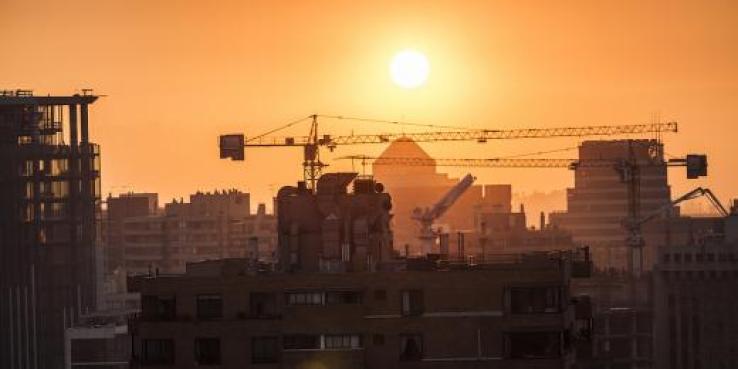The latest report from the U.N. Intergovernmental Panel on Climate Change (IPCC), reflecting the scientific consensus on global warming, came out last week with two seemingly at-odds conclusions. First, there has been a lot of warming since the mid-20th century that is “extremely likely” due to human influence. Second, the lower end of the projected range of future warming is lower than once thought, and there is a slight, unexplained lack of predicted warming over the past decade. (Yay?) But the report’s main message is certain: The world scientific community, represented by more than 250 authors and 1,000 reviewers from 39 countries, believes that “warming in the climate system is unequivocal” based on multiple lines of independent evidence. The oceans are warmer, there is less ice and snow, the atmosphere has more carbon and sea level has risen. Climate change is here.
Like the IPCC’s four previous major assessments, dating back to 1990, the Fifth Assessment Report provides an in-depth (3,000-page) overview of the many observed changes in the climate system, relying on everything from model simulations, “instrumental era” data going back to the mid-19th century, and paleoclimate reconstructions from ice and sediment cores, which date back hundreds to millions of years. Helpfully, the IPCC also provides a Summary for Policymakers, which makes a number of overarching conclusions, assigns confidence levels for each one and provides clear summaries of the evidence presented in the full report.
Here are some of the main points:
- Each of the last three decades has been successively warmer than any preceding decade since 1850 (p. 3).
- Over the last two decades, the Greenland and Antarctic ice sheets have been losing mass, glaciers have continued to shrink almost world wide, and Arctic sea ice and Northern Hemisphere snow cover have shrunk (p. 5).
- The rate of sea level rise since the mid-19th century has been larger than the mean rate during the previous two millenia (p. 6).
- The atmospheric concentrations of greenhouse gases (CO2, N2O and CH4) have increased to levels unprecedented in the last 800,000 years. CO2 concentrations have increased by 40 percent since pre-industrial times. The ocean has absorbed 30 percent of this, and has acidified. (p. 7).
- It is extremely likely that human influence has been the dominant cause of the observed warming since the mid-20th century (p. 12).
- Most aspects of climate change will persist for many centuries even if further emissions of CO2 are stopped (p. 19).
If that isn’t sobering enough, now consider that one of the main criticisms of the new assessment is that it is too conservative. Michael Mann, the climate scientist who invented the famous hockey stick graph, criticized the conclusion that the lower end of the range of uncertainty around future warming should be lowered, simply based on less-than-expected warming over the last decade. Mann also said the approach to sea level rise was too conservative, and it left out a credible study suggesting sea levels could rise twice as much by 2100 as the IPCC predicts. Other scientists have raised concerns that the report does not describe “positive feedbacks” (where nature amplifies man-made warming), such as what could occur if land-based ice in Greenland and Antarctica were to melt suddenly, possibly triggered by melting permafrost releasing tons of potent methane into the atmosphere. These scary scenarios suggest a much greater threat to the world’s coastal zones than the IPCC report does. The IPCC’s process will perhaps always run conservative, though, because the deadline for incorporating new research into models is several years before the assessment report comes out, and is thus always lagging the leading edge of scientific knowledge.
What does all of this mean for the Bay Area? Our region (and our state) have done a lot to come up with responsible policy to reduce emissions (leading with the 2006 Global Warming Solutions Act or AB 32 and continuing with Plan Bay Area), and also to beta-test adaptation approaches, such as SPUR’s Ocean Beach Master Plan and BCDC’s Adapting to Rising Tides project. However, with accelerating climate change on the way, we must hasten our efforts to plan ahead. Resiliency cannot be left to a wait-and-see approach: We must prepare for the full range of impacts we are likely to experience, seriously consider the threats at the upper boundary of uncertainty and start adapting. As the IPCC confirmed, it’s too late to stop some impacts: Past, present and future emissions of CO2 have triggered a “substantial multi-century climate change commitment.” What’s worse: Limiting the warming to less than 2 degrees C (the upper limit of “safe” climate change) would require the total cessation of emissions to the atmosphere of about 800 gigatons of carbon. As of 2011, we have already emitted two-thirds of this amount.
SPUR has conducted research, public programs and advocacy to support both stopping climate change (mitigation) and preparing for it (adaptation), but it’s clear we all need to double down on both.
